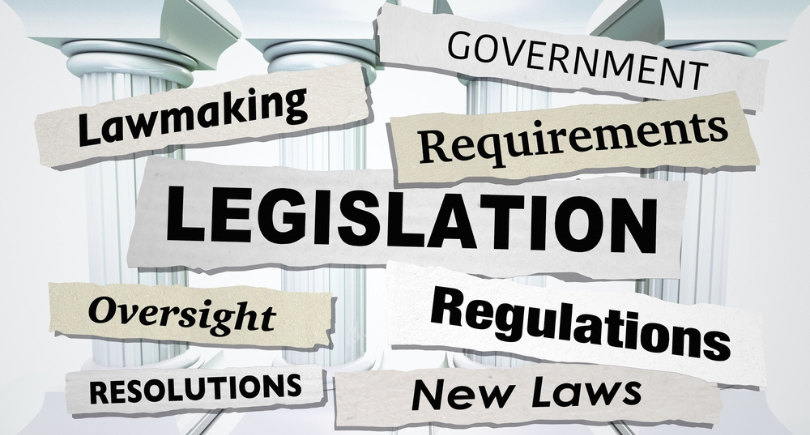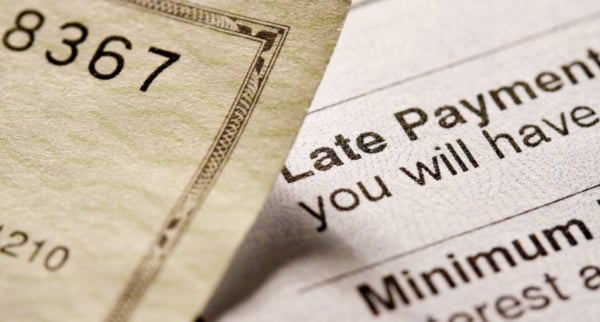
Bank credit card rates are at or near historic highs, topping 30% in some cases, and vulnerable consumers are feeling the pain. If you’re looking for some intrest rate protection you could be tempted to head to a credit union where regulations cap credit union card rates at 18%. Ironically, though, this cap is not as consumer friendly as it might appear according to some experts.
Credit unions (CUs), member-owned not-for-profit financial financial institutions, have historically had lower credit card rates than major bank cards anyway. In fact, the National Credit Union Administration (NCUA) has collected data for years showing that average rates for cards issued by CUs are consistently lower than bank card rates.
The most recent data from June 30, 2003, shows that average CU rates are 12.48%, compared to average bank rates of 14.50%. While this difference may not sound impressive, it becomes significant for the large number of consumers that carry big balances. According to a recent article in Yahoo! finance, 6% of consumers, which translates to 14 million Americans, have more than $10,000 in card debt.
Moreover, the average card rate stat from NCUA seems conservative in comparison to other sources. CNBC, for example, reports that average card rates are 20.69% and are at or near historic highs. And, the Federal Reserve, claims that the average rate in the U.S. on accounts with balances that assessed interest (i.e. consumers charged finance or interest charges) was even higher at an eye-popping 22.16%!
Given this background, at least on paper, the 18% cap at CRs looks like a good thing, especially for consumers carrying a balance (a.k.a. revolvers) and paying the average 22.16% rate.
But, are there downsides to the cap? And why do some consumer advocates oppose all rate caps? Perhaps more importantly, why do some CUs want the cap raised to 21% (from 18%) or want a floating cap that would vary based on market conditions?
The 18% credit union interest cap is artificial
As a disclaimer, I champion CUs and have maintained CU membership myself for many years. Furthermore, I personally believe there is benefit to having the cap for credit union customers who carry significant balances AND who do not have a good credit score (more on this caveat below).
Having said this, in the interest of objectivity, the 18% rate cap is a moving target and is NOT a permanent cap. Specifically, according to CUToday.info, the NCUA votes periodically on whether to raise or lower that cap. Most recently,
“The NCUA Board voted 3-0 [on 1/26/23] to maintain the federal interest rate cap at 18% for the next 18 months, although the board made clear it has the authority to revisit the cap at any time prior to the end of that time period.”
In fact, the board already raised the cap to 18% from the original cap of 15% that dates back to 1980.
According to CUToday.info, “Congress set the cap at 15% in 1980, but the agency has the discretion to raise the cap for ‘safety and soundness’ reasons for periods not to exceed 18 months.”
BONUS TIP!
If you have a good credit score, then the rate cap should not really be of interest to you as you should be able to qualify for a low interest, 0% intro APR or, if you already have a balance on an existing card, a 0% intro balance transfer, card. There are many good 0% offers currently available, mostly from banks, but they are almost exclusively for people with good to excellent credit.
“A $10,000 balance even with an 18% rate will end up being very costly,” points out Beverly Harzog, a consumer finance analyst and author of The Debt Escape Plan: How to Free Yourself from Credit Card Balances, Boost Your Credit Score, and Live Debt-Free.
Many consumer advocates strongly oppose rate caps
I have been a consumer advocate for 20-plus years. In the past, I would have told you (with much passion) that I supported a national rate cap. I had struggled with more than $40,000 in card debt following graduate school and, as a result, knew the devastating effect of paying interest. Moreover, I lived in Arkansas and many Arkansans took pride in our low rate cap, viewed nationally as being consumer-friendly.
Fast forward 20 years and my opinions have evolved. One of the biggest problems with rate caps is that both CUs and banks alike are less likely to grant credit to consumers with bad or no credit if caps are in place. This may sound harsh on the surface, but it’s important to understand that financial institutions that issue credit to consumers with bad credit assume increased risks.
The Consumer Financial Protection Bureau (CFPB) notes that “people with subprime scores – less than 660 – are typically offered a higher rate due to a greater risk of default”. In plain English, if you have poor credit, you’re appear more likely to stop paying your card and/or to make late payments.
“I don’t generally like caps because it can have a negative impact on consumers,” Harzog explains. “Those with subprime scores who apply for a card might qualify [or get approved], but only if the financial institution is able to offer a high interest rate.
“The high rates reduce the risk for the bank because they expect to earn money on the interest paid,” she continues. “With a cap, this same consumer might not be approved for a card at all. The bank, if unable to set a rate that offsets its risk, may not be willing to take the chance on someone with a lower score.”
This reasoning forms the basis of a common thread among advocates who oppose a cap. Harzog goes on to say she “doesn’t support a national cap for the same reasons described above.” Instead, she believes “the negative impact on consumers outweighs the perceived benefit.”
“Using a card responsibly means that you pay your bill IN FULL (with the exclusion of a 0% transfer offer, of course) and by the due date EVERY single month,” Harzog emphasizes. “This way, you build credit and can save money with benefits you don’t have to pay for. If you don’t carry a balance, the APR isn’t even a factor.”
BONUS TIP!
Tired of all the rate increases that we have witnessed in the past year or two? Though rare, there are a few credit union cards that offer fixed rates. Almost all cards are variable rate, which means your rate will increase every time the Federal Reserve raises rates. The rates on fixed rate cards, though, do not increase when the Fed acts (though there is no truly permanently fixed rate card).
Card issuers will likely raise fees and/or cut benefits to offset a cap
Finally, if regulators institute a national cap, you can rest assured that card issuers will offset lost revenues by such means as raising fees or cutting benefits. This happened in reverse, for instance, soon after the CARD Act of 2009 went into effect.
I vividly remember when First Premier Bank, which issues subprime cards, raised its rates from a palatable 9.9% fixed APR to an egregious 79.99% (the highest rate I’ve ever seen)! This rate hike came soon after the CARD Act put a cap on card fees.
“When you remove a source of income from issuers, you can expect them to make up the lost revenue somewhere,” Harzog says. “Perhaps the annual fee goes up or the rewards are reduced.”
Given this reality, it should come as no surprise that some credit union employees also don’t like the cap as they feel that it restricts their ability to stay competitive with banks (and, as noted above, their ability to extend credit to the consumers that need credit the most).
Kenny Freedman is a disabled veteran that has struggled with card debt. His struggles are familiar to millions of consumers and he does favor a rate cap, but with an interesting twist.
I propose that rates only go up when the inflation rate increases and would not go up higher than twice the increase in inflation rate. Think about it, if inflation increases by 5%, credit cards would increase by a maximum of 10%. This would encourage less card use when inflation is high, which would help prevent financial burdens for Americans.
Freedman admits he has a love-hate relationship with credit. While he loathes card debt, he knows the importance of good credit. He is trying to raise his score so he can purchase a dump truck in order to start a new career.
The world revolves on credit. Try buying a car or house with no credit… it’s next to impossible! You need credit to survive in our monetary system, but it can quickly indebt you to a “financial prison.” Unless you are lucky enough at age 18 to get a free car for your birthday, your dependence on credit starts with the purchase of your first car. Then your first home and doesn’t end until you die. You literally can’t pay cash (for big ticket items) without a mountain of paperwork to prove you’re not a drug dealer!
Final thoughts
A credit card rate cap sounds consumer friendly and like the perfect solution for the millions of folks who struggle with card debt. Simply put, there is no doubt that a certain segment of the population would benefit from the cap.
However, a cap would also likely create unintended negative consequences, particularly for the millions of consumers who struggle with having bad or no credit. Experian estimates that in 2021, nearly 1 in 3 consumers had a subprime score).
Given this reality, promoting the responsible use of credit through financial literacy is the best option. I have maintained this position for many years and know that it works.
Having said this, I will be the first to admit that a card is not for everyone. The bottom line is that if it tempts you to overspend, then you should use another payment form and pursue other ways to build credit.
I sincerely hope these insider tips are helpful to you and would love your feedback on card debt, interest rates, etc. Who knows, I may include a tip from you in a future article!


